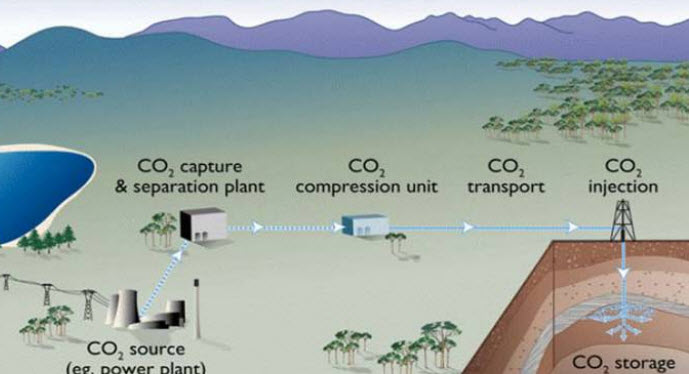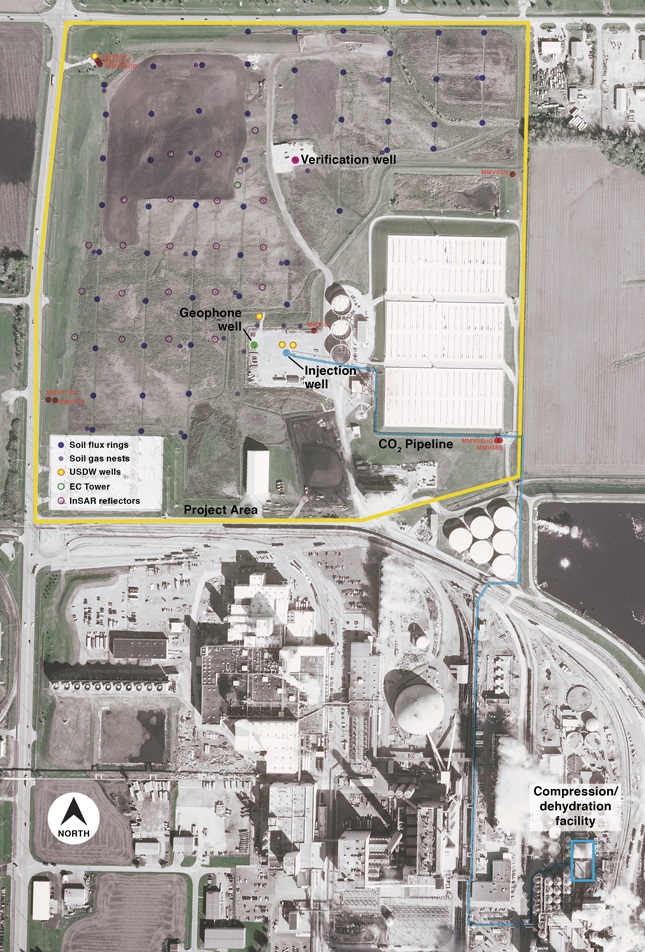One million metric tons of CO2 stored underground in Illinois
January 12, 2015
One of the largest carbon sequestration projects in the U.S., the Illinois Basin – Decatur Project (IBDP), has reached its goal of capturing 1 million metric tons of carbon dioxide (CO2) and injecting it deep underground in the Mount Simon Sandstone formation beneath Decatur, Illinois, a Deep Saline reservoir.
For context, three million tons are emitted annually from a typical medium-sized, coal-fired power plant.
The project was designed to demonstrate the feasibility of carbon capture and storage, with the goal of slowing global warming trends, according to Robert Finley, director of the Advanced Energy Technology Institute at the Illinois State Geological Survey, part of the Prairie Research Institute at the University of Illinois.
According to the U.S. Department of Energy (DOE), there are currently more than 100 active carbon sequestration projects.
Other methods of carbon sequestration include Coalbed Methane and Enhanced Oil Recovery (stored in oil beds), according to the Midwest Geological Sequestration Consortium. Carbon dioxide can also be stored at the bottom of the ocean, and in soils, crops, and other plants.
How to store 1 million tons of CO2

A geological carbon-storage process (credit: U.S. Department of Energy)
At the IBDP, the CO2 is captured from the ethanol production facility at Archer Daniels Midland Company. It is then dehydrated and compressed to 1,400 psi for injection into a well that is 7,000 feet deep. The CO2 enters the rock formation through a set of perforations in the well that isolate the injection zone from the rest of the environment. The CO2 is stored in the pore spaces of the sandstone and sealed in place by a cap layer of impermeable shale.
Safety issue
Finley explained that for more than 100 years, the Illinois State Geological Survey has collected background information on the subsurface rocks of the Illinois Basin, and it has been investigating the carbon storage potential of the Mount Simon Sandstone in particular for more than 10 years.
“Extensive monitoring, including deep underground, takes place during and after injection to be sure the stored CO2 stays in place,” he said. “Monitoring techniques include using geophysical technology to confirm the position of the CO2 underground and wells to monitor groundwater and soils.
“Geological sequestration of CO2 by injection into the Earth’s surface is a promising technology being studied around the world. There are currently projects underway in Algeria, Australia, Canada and Norway, and under development in China, South Africa, South Korea and other locations. The Illinois Basin – Decatur Project is one of the first projects of similar scope in the United States to complete the goal of a 1-million-ton injection of CO2 for geological sequestration.”
